Building walls underwater to slow down glacier collapse
20 September 2018
Human activities – such as industry, agriculture and transportation – release greenhouse gases, which trap heat in the Earth’s atmosphere and make the planet warmer. This increase in temperatures (called global warming or climate change) is especially severe in the Arctic, at the very north of our planet, and in parts of Antarctica, the frozen continent at the south of our planet. These icy regions have plenty of glaciers, which are at risk of melting as the Earth warms. Glaciers are slow-flowing rivers of ice, many of which drain into the ocean forming a floating platform or shelf of ice. If these ice shelves melt or break apart, the glaciers would dump more of their ice into the ocean, raising the sea level. To slow down glacier melting, scientists Michael Wolovick and John Moore have come up with an “unthinkable” idea, called glacial geoengineering. They suggested that we could build columns or walls underwater to support ice shelves and to limit the amount of warm water getting to them. (You can find a drawing of their idea in this article from The Guardian newspaper.) This would prevent the glaciers from losing so much ice, delaying sea-level rise. Their calculations, published in the journal The Cryosphere, show that this idea could indeed work to delay glacier melting. This would give more time to populations living near to the world’s coastal areas to adapt to rising sea levels. But they warn that humans need to get emissions of greenhouse gases under control for glacial geoengineering to work. If air temperatures rise too much due to climate change, then the glaciers will melt from the top, as well as from the ocean. Engineering glaciers would only limit sea-level rise, while reducing emissions could also limit other harmful consequences of climate change, such as floods, droughts and heat waves.Find out more
Discuss with your parents or teacher
What are greenhouse gases?
What is sea-level rise?
What’s the difference between glaciers, ice shelves and ice sheets?
How can humans reduce their emissions of greenhouse gases?
Print version
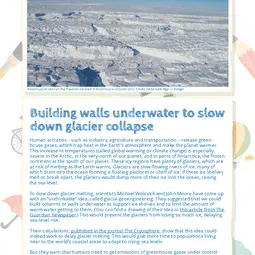
This is a kids' version of the EGU article: 'Building walls underwater to slow down glacier collapse'. It was written by Bárbara Ferreira (EGU Media and Communications Manager), reviewed for scientific content by Richard Jones (Junior Research Fellow, Department of Geography, Durham University, UK) and Daniel Hill (Lecturer, School of Earth and Environment, University of Leeds, UK), and for educational content by Teresita Gravina (Teacher at Ic Vanvitelli, Caserta, Italy).
Translations
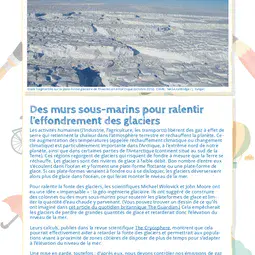
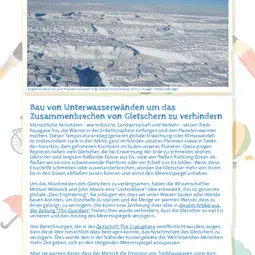
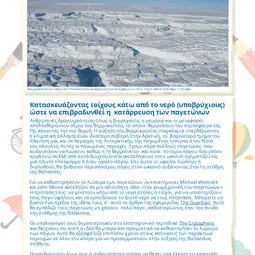
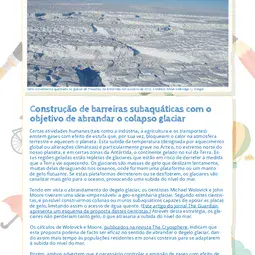
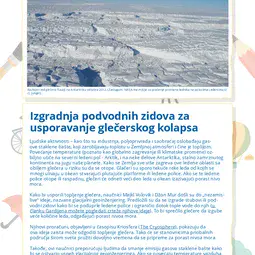
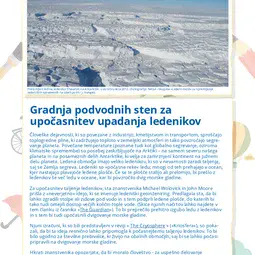
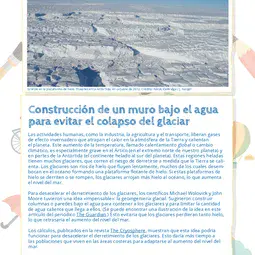
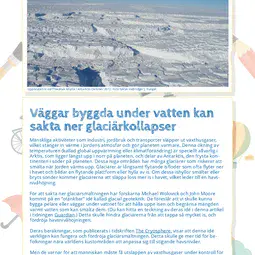
All English-language Planet Press releases are carefully edited, reviewed and proofed, by scientists, educators and EGU staff. Please note that once translated, Planet Press releases receive no further checks from EGU staff. For this reason, we cannot guarantee their accuracy, though we trust the quality of our voluntary translators and are grateful for their work.

